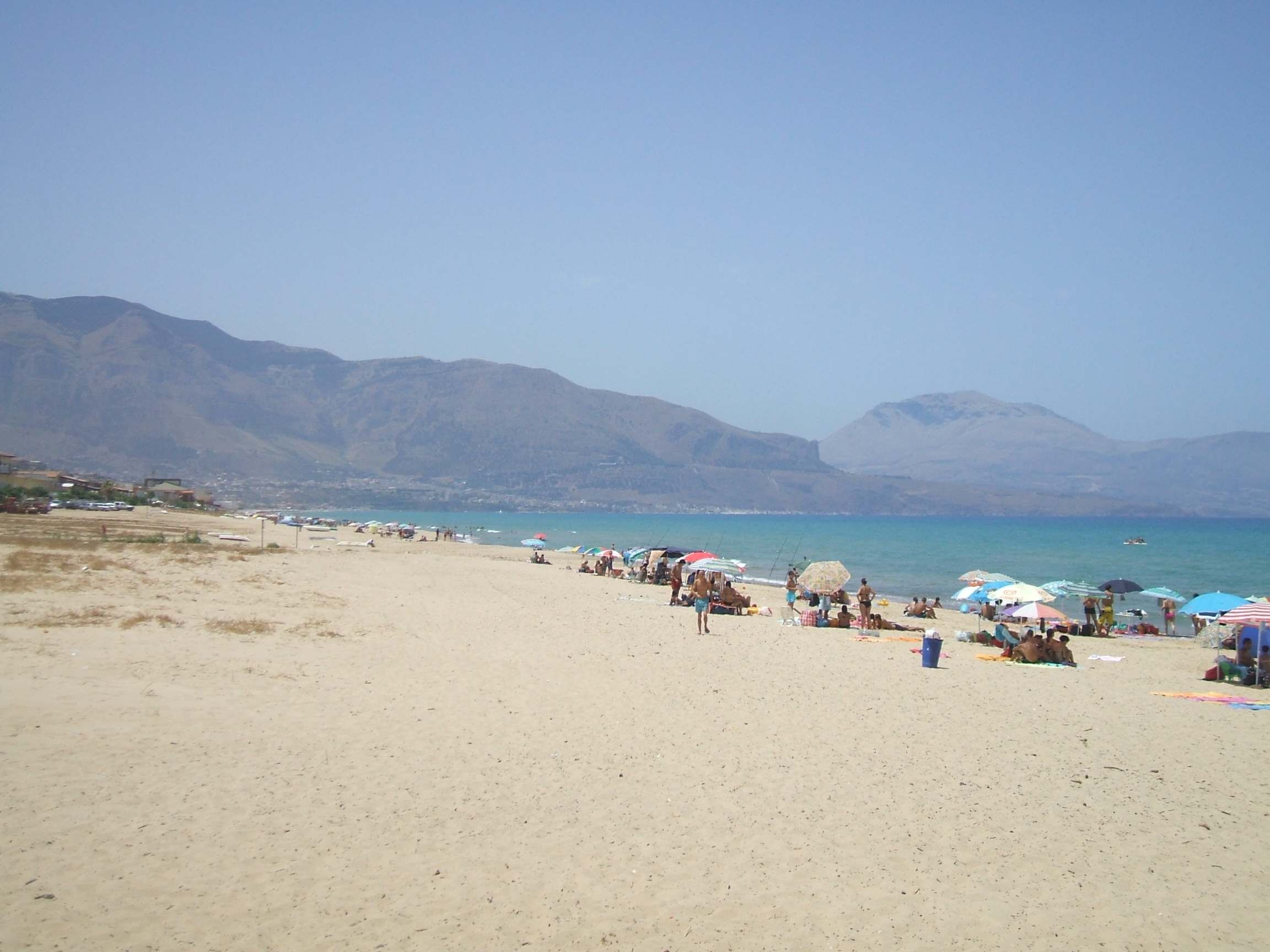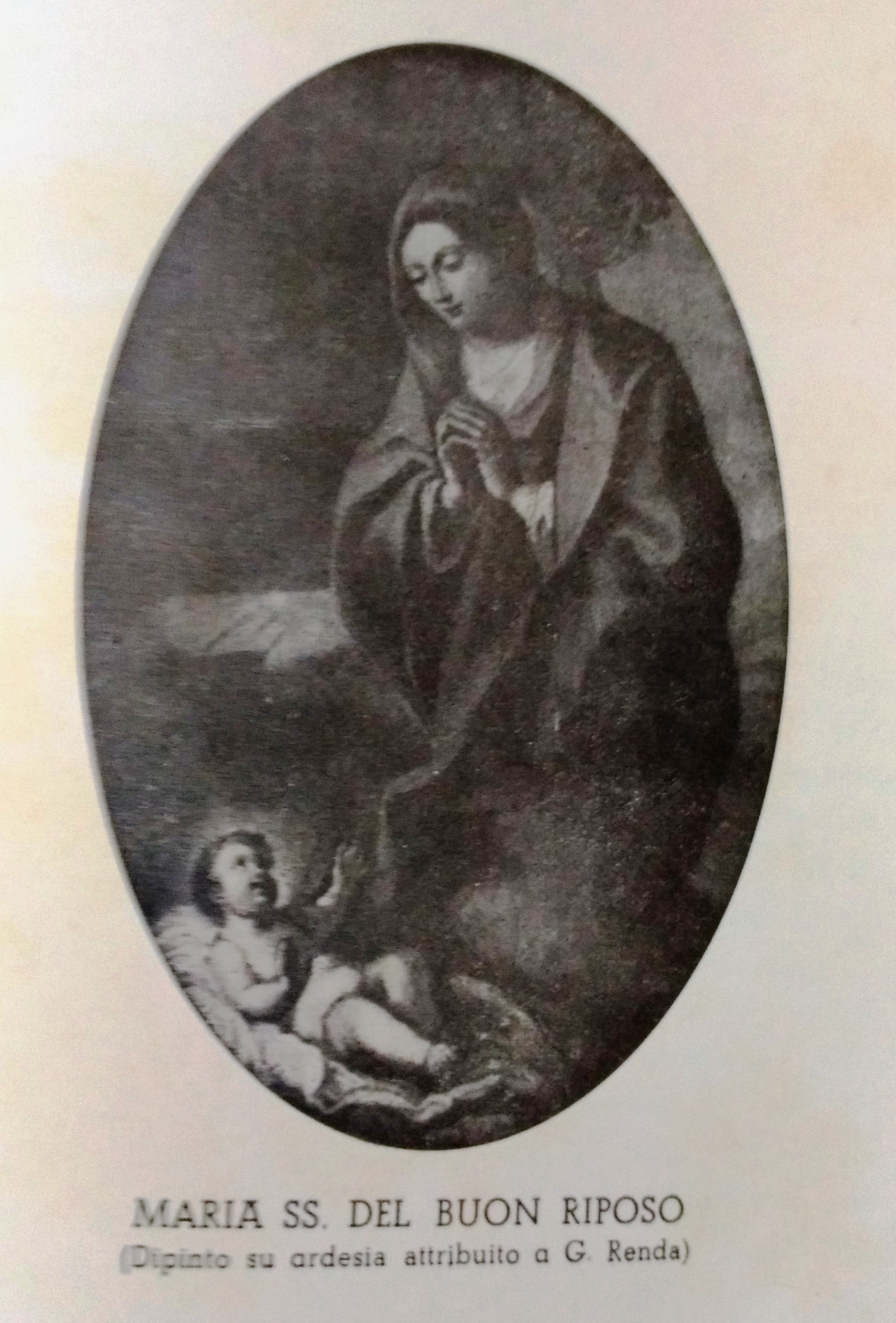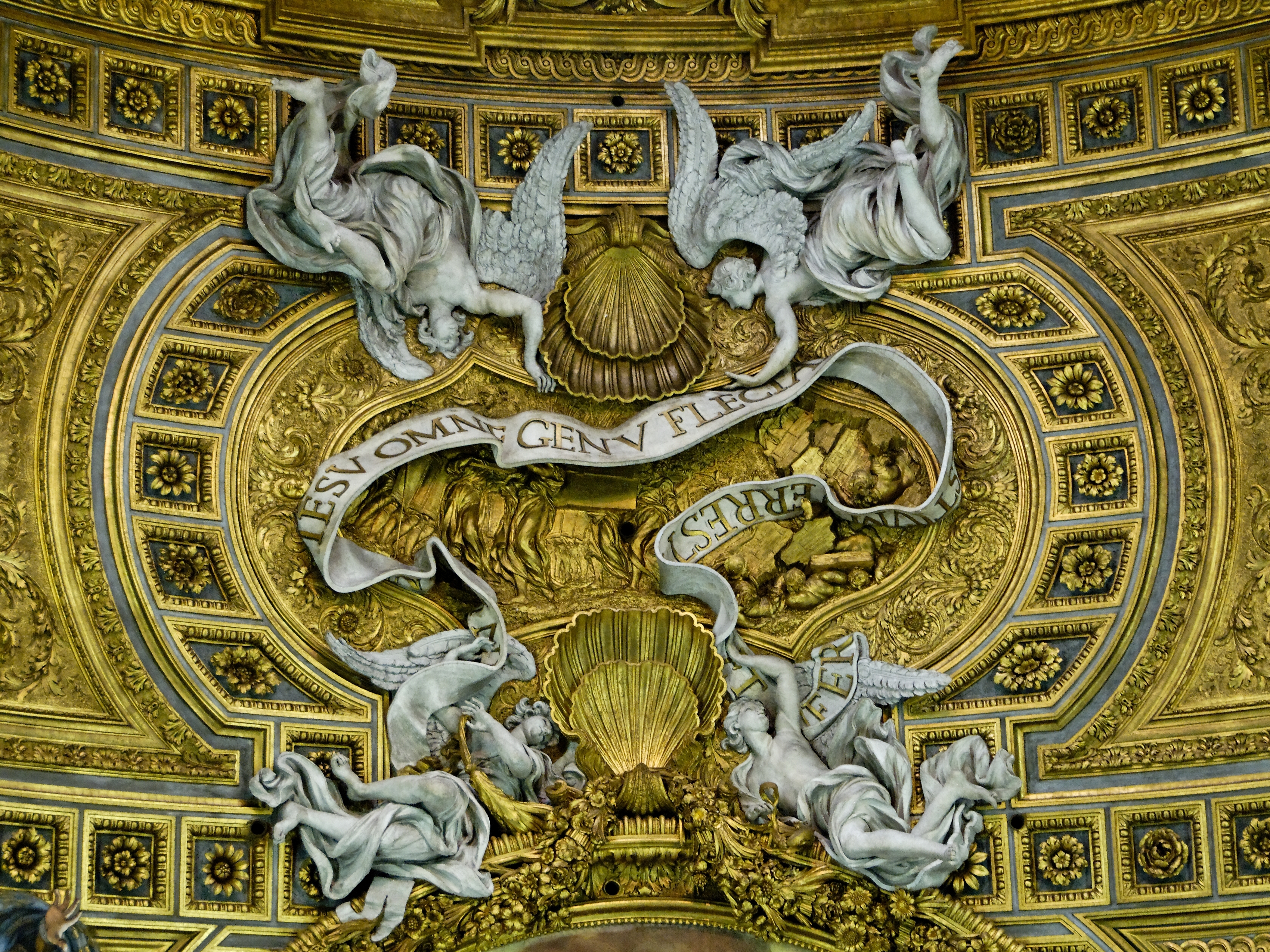|
Church Of The Most Holy Saviour
The Chapel of Santissimo Salvatore ("Holy Saviour") is a Catholic church in Alcamo, in the province of Trapani. History This church is mentioned in a document dated 1379; even the historian Ignazio De Blasi speaks about it and says that the Church, at the foot of mount Bonifato, was very old as it has the main door facing west and the Cappellone facing east, like in ancient times. Next to the church, in 1531 there was the friary of the Fathers of the Our Lady of Mercy, also called of the Redemption because they were voted to the noble work of rescuing the Christians that were in the hands of the Turkish; since 1621 the Conventual Franciscans succeeded to the Order of Our Lady of Mercy.Cataldo Carlo: Accanto alle aquile: Il castello alcamese di Bonifato e la chiesa di S. Maria dell’Alto p.98-101; Brotto, Palermo, 1991 In 1639 the carpenters, called coopers ("bottai") had the right of patronage on it; the March Fridays were solemnized on the high altar for their devot ... [...More Info...] [...Related Items...] OR: [Wikipedia] [Google] [Baidu] |
Alcamo
Alcamo (; scn, Àrcamu, italic=no) is the fourth-largest town and commune of the Province of Trapani, Sicily, with a population of 44.925 inhabitants. It is on the borderline with the Metropolitan City of Palermo at a distance of about 50 kilometres from Palermo and Trapani. Nowadays the town territory includes an area of 130,79 square kilometres and is the second municipality as for population density in the province of Trapani, after Erice. Alcamo is bounded by the Tyrrhenian Sea on the north, Balestrate and Partinico on the east, Camporeale on the south and Calatafimi-Segesta and Castellammare del Golfo on the west. Its most important hamlet is Alcamo Marina at about 6 kilometres from the town centre. Together with other municipalities it takes part in the ''Associazione Città del Vino'', the movement ''Patto dei Sindaci'', ''Progetto Città dei Bambini'', ''Rete dei Comuni Solidali'' and ''Patto Territoriale Golfo di Castellammare''. Geography Territory Alcamo is ... [...More Info...] [...Related Items...] OR: [Wikipedia] [Google] [Baidu] |
Franciscan
The Franciscans are a group of related Mendicant orders, mendicant Christianity, Christian Catholic religious order, religious orders within the Catholic Church. Founded in 1209 by Italian Catholic friar Francis of Assisi, these orders include three independent orders for men (the Order of Friars Minor being the largest contemporary male order), orders for women religious such as the Order of Saint Clare, and the Third Order of Saint Francis open to male and female members. They adhere to the teachings and spiritual disciplines of the founder and of his main associates and followers, such as Clare of Assisi, Anthony of Padua, and Elizabeth of Hungary. Several smaller Franciscan spirituality in Protestantism, Protestant Franciscan orders exist as well, notably in the Anglican and Lutheran traditions (e.g. the Community of Francis and Clare). Francis began preaching around 1207 and traveled to Rome to seek approval from Pope Innocent III in 1209 to form a new religious order. The o ... [...More Info...] [...Related Items...] OR: [Wikipedia] [Google] [Baidu] |
Church Of Madonna Del Riposo (Alcamo)
Madonna del Riposo ("Our Lady of the Rest") is a Catholic church located in Alcamo, in the province of Trapani. History In 1656 in the district called "Madonna del Riposo", at the foot of Mount Bonifato, they built a little Church in honour of the Madonna with the same title. The strip of land needed for its construction was donated by doctor Diego Nicodemi, and there are two notarial deeds, drawn up by the notary La Perna which attest the details; the land should have been about five metres and half long and four metres large.Cataldo Carlo: Accanto alle aquile: Il castello alcamese di Bonifato e la chiesa di S. Maria dell'Alto p.98-101; Brotto, Palermo,1991 This piece of land was located in the feud of Costa and in ''contrada the pusaturi''. In 1939 the building was restored thanks to the offerings of the believers and the Virgilio family, the owner of this place, donated a painting on slate with the image of the Virgin Mary, assigned to Giuseppe Renda. They also made the e ... [...More Info...] [...Related Items...] OR: [Wikipedia] [Google] [Baidu] |
Church Of The Holy Heart (Alcamo)
Sacro Cuore ("Holy Heart") is a Catholic church located in Alcamo, in the province of Trapani. History The parish of the Holy Heart of Jesus was established by the bishop of Trapani, monsignor Ricceri, on 4 October 1967.Carlo Cataldo: Guida Storico-Artistica dei Beni Culturali di Alcamo-Calatafimi-Castellammare del Golfo-Salemi-Vita; Sarograf, Alcamo, 1982 Several years before the Episcopal Curia (Catholic Church) of Trapani had bought a piece of land to build a Church which was to serve the new area that was expanding next to Viale Europa. They started with a prefabricated structure, with a roof in asbestos cement, a hall, and two rooms; in 1978 they built the parsonage and other premises for the parish, but they had to wait until 1982 to start the real building which included the Church and the hall below it. In 1987 Vincenzo Settipani, an architect, substituted Li Santi, who had died; he designed the mosaics, the stained glasses, the holy water stoups, the Baptismal font ... [...More Info...] [...Related Items...] OR: [Wikipedia] [Google] [Baidu] |
Parson
A parson is an ordained Christian person responsible for a small area, typically a parish. The term was formerly often used for some Anglican clergy and, more rarely, for ordained ministers in some other churches. It is no longer a formal term denoting a specific position within Anglicanism, but has some continued historical and colloquial use. In the pre-Reformation church, a parson was the priest of an independent parish church, that is, a church not under the control of a larger ecclesiastical or monastic organization. The term is similar to rector and is in contrast to a vicar, a cleric whose revenue is usually, at least partially, appropriated by a larger organisation. Today the term is normally used for some parish clergy of non-Roman Catholic churches, in particular in the Anglican tradition in which a parson is the incumbent of a parochial benefice: a parish priest or a rector; in this sense a parson can be compared with a vicar. The title ''parson'' can be applied to cle ... [...More Info...] [...Related Items...] OR: [Wikipedia] [Google] [Baidu] |
1968 Belice Earthquake
The 1968 Belice earthquake sequence took place in Sicily between 14 and 15 January. The largest shock measured 5.5 on the moment magnitude scale, with five others of magnitude 5+. The maximum perceived intensity was X (''Extreme'') on the Mercalli intensity scale. The earthquake sequence, centred between the towns of Gibellina, Salaparuta and Poggioreale, killed at least 231 people, possibly more than 400, with between 632 and about 1,000 injured and left 100,000 homeless. It is known in Italy as Terremoto del Belice. Tectonic setting Sicily lies on the complex convergent plate boundary between the African Plate and the Eurasian Plate. The geology of the western part of the island is dominated by the Gela Nappe, a thin-skinned fold and thrust belt. The Gela Nappe consists of Pliocene-Quaternary age sedimentary rocks deposited in the earlier foredeep, thrust up onto the thick carbonate sequence of the Pelagian-Hyblean Platform of the African Plate. Earthquake There was a ... [...More Info...] [...Related Items...] OR: [Wikipedia] [Google] [Baidu] |
Arch
An arch is a vertical curved structure that spans an elevated space and may or may not support the weight above it, or in case of a horizontal arch like an arch dam, the hydrostatic pressure against it. Arches may be synonymous with vaults, but a vault may be distinguished as a continuous arch forming a roof. Arches appeared as early as the 2nd millennium BC in Mesopotamian brick architecture, and their systematic use started with the ancient Romans, who were the first to apply the technique to a wide range of structures. Basic concepts An arch is a pure compression form. It can span a large area by resolving forces into compressive stresses, and thereby eliminating tensile stresses. This is sometimes denominated "arch action". As the forces in the arch are transferred to its base, the arch pushes outward at its base, denominated "thrust". As the rise, i. e. height, of the arch decreases the outward thrust increases. In order to preserve arch action and prevent collapse ... [...More Info...] [...Related Items...] OR: [Wikipedia] [Google] [Baidu] |
Greasy Pole
Greasy pole, grease pole, or greased pole refers to a tall pole that has been made slippery with grease or other lubricants and thus difficult to grip. More specifically, it is the name of several events that involve staying on, climbing up, walking over or otherwise traversing such a pole. This kind of event exists in several variations around the world. It is also used as a metaphor for the difficulty in achieving the top of one's career. Canada As part of Queen's Engineering Frosh Week, the incoming first-year engineering students must, with the help of the upper-year engineering students, climb to the top of a grease pole and remove a tam which is nailed to the pole's top. The Queen's Grease Pole is a metal football goalpost stolen by Queen's engineering students in 1955 from University of Toronto's Varsity Stadium. Currently, the pole is covered in lanolin and placed in the centre of a pit of muddy water referred to as the "Grease Pit", but from the first climbing of ... [...More Info...] [...Related Items...] OR: [Wikipedia] [Google] [Baidu] |
Low Mass
Low Mass (Latin ''Missa lecta'', "read Mass") is a Tridentine Mass defined officially in the Code of Rubrics included in the 1962 edition of the Roman Missal as a Mass in which the priest does not chant the parts that the rubrics assign to him. A sung Mass celebrated with the assistance of sacred ministers (deacon and subdeacon) is a High or Solemn Mass; without them it is a '' Missa Cantata''. History Low Mass originated in the early Middle Ages as a shortened or simplified form of Solemn Mass. In the early church, as in the Orthodox church today, all services were chanted, and there was no equivalent to the Roman Low Mass or to the Anglican "said celebration". Masses without solemnity in early Christianity Alongside the public solemn Masses, the practice developed from the 4th century onwards, of smaller private Masses for smaller groups of believers. These masses were often celebrated in the catacombs, for the deceased or on a special anniversary. An example is provided by Sai ... [...More Info...] [...Related Items...] OR: [Wikipedia] [Google] [Baidu] |
Holy Saviour
Two names and a variety of titles are used to refer to Jesus in the New Testament. In Christianity, the two names Jesus and Emmanuel that refer to Jesus in the New Testament have salvific attributes.''Bible explorer's guide'' by John Phillips 2002 page 147''All the Doctrines of the Bible'' by Herbert Lockyer 1988 page 159 After the crucifixion of Jesus the early Church did not simply repeat his messages, but focused on him, proclaimed him, and tried to understand and explain his message. One element of the process of understanding and proclaiming Jesus was the attribution of titles to him.''Jesus: a Gospel portrait'' by Donald Senior 1992 pages 145-147 Some of the titles that were gradually used in the early Church and then appeared in the New Testament were adopted from the Jewish context of the age, while others were selected to refer to, and underscore the message, mission and teachings of Jesus. In time, some of these titles gathered significant Christological significance. ... [...More Info...] [...Related Items...] OR: [Wikipedia] [Google] [Baidu] |
Titular (Catholicism)
In Roman Catholicism, a titular is a cardinal who holds a titulus, one of the main churches of Rome. Such holders were initially by tradition native-born Romans (of high social standing). The first church in Rome to have a non-Italian titular was Santi Quattro Coronati: Dietrich of Trier was appointed titular in 975 by Pope Benedict VII. That basilica was originally ''Titulus Aemilianae'', drawing its name in characteristic fashion from its foundress, who doubtless owned the extensive suburban Roman villa whose foundations remain under the church and whose audience hall became the ecclesiastical basilica. The term also applies to the holder of a titular see A titular see in various churches is an episcopal see of a former diocese that no longer functions, sometimes called a "dead diocese". The ordinary or hierarch of such a see may be styled a "titular metropolitan" (highest rank), "titular archbish ..., which is a nominal (often former) episcopal or archiepiscopal see without ... [...More Info...] [...Related Items...] OR: [Wikipedia] [Google] [Baidu] |






